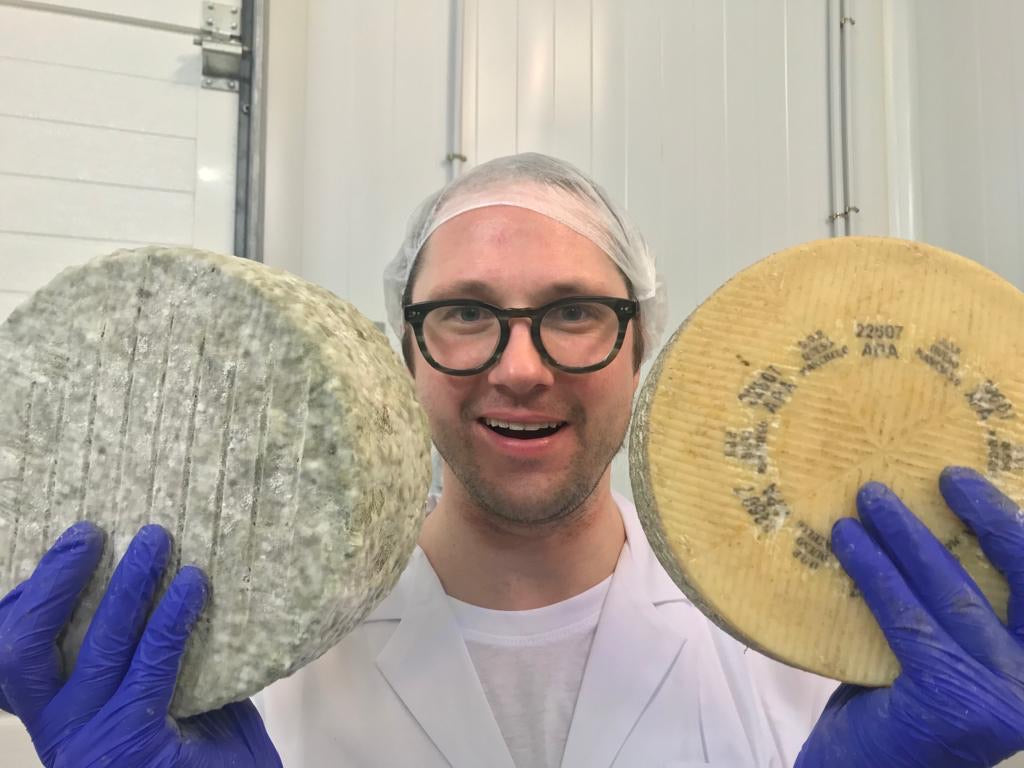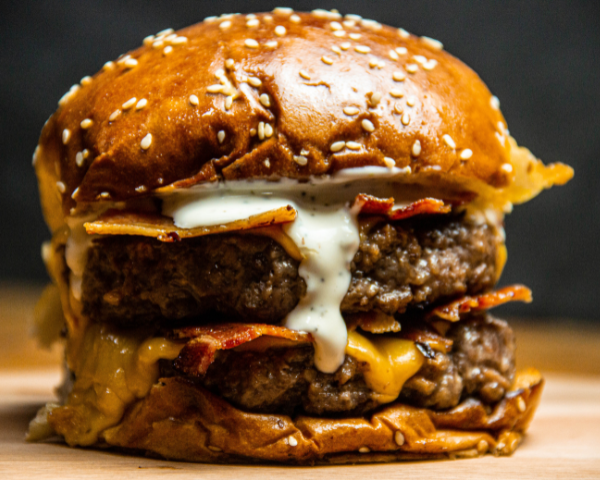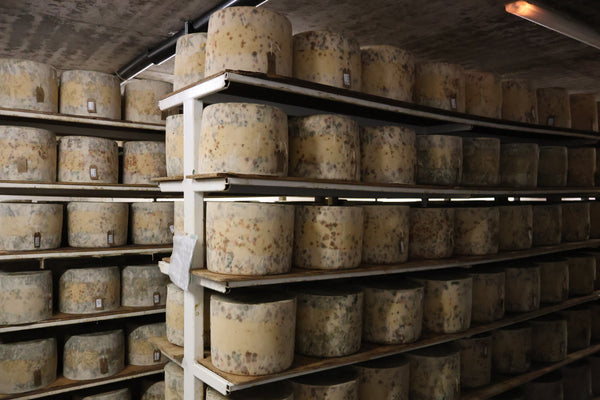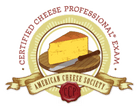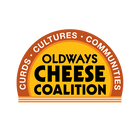My name is Matthew Rose, and I have been with Fairfield/Greenwich Cheese Company for seven years; for the last five years, I have enjoyed being our Lead Cheesemonger. I work closely with Chris and Laura and our staff of cheesemongers to ensure that each team member operates at the height of their abilities to give you the best overall experience possible each time you stop in at the shop. As many of you know, I was selected for an internship organized by our importer (Essex St. Cheese) and their Manchego producer, Queseria 1605. Essex Street Cheese brings the most iconic European cheeses to the US, sourcing the most artisan and traditionally produced ones produced. I had the privilege of spending about two weeks in Spain, dividing my time between the creamery, the farm, and the retail cheese community in Madrid. I had an amazing experience delving into the daily operations of an extraordinary Manchego PDO producer. I caught an impactful glimpse of what's going on in the cheese industry in Spain and how that affects us in the shop.
After spending nearly a decade behind various cheese counters in this country, I could make more than a few generalizations regarding Americans' palate and spending habits regarding cheese. One of those generalizations is that Americans love big, bold, and nutty cheeses, especially if they are sporting a hefty amount of crunchy tyrosine crystals. Our easiest-selling cheese category has to be the Alpine cheeses with their over-the-top flavor profile of roasted nuts, caramelized and green onion, sautéed and fresh garlic, and cooked meat. But once you have a nice piece of mountain cheese in your basket, most consumers know that those cheeses may be a bit too intense to please the variety of guests at their next social gathering. They need another cheese.
They need a cheese with an overall sensory experience that is more accessible, subtle, and subdued but still has mass appeal, that wow factor. Cheddar can be too easily scrutinized as common. What they don't know, what a good, experienced monger will know, is that they're heading to firm sheep territory, to La Mancha - the home of Manchego PDO. And because every cheeseboard deserves something delicious for everybody, we sell more Manchego PDO than any other firm cheese.
America is the world's largest consumer of Manchego PDO, importing over 30% (6 million kilograms, or 13 million pounds worth!) of all Manchego PDO production. America eats more Manchego than Spain does! In 2021 the US imported $1.57B of cheese (Observatory of Economic Complexity), making us one of the largest consumer markets in the world and one of the most desirable destinations for products intended to turn a profit. These conditions contribute to the increasing economic pressure for name-protecting regulating bodies to favor larger PDO product producers rather than their smaller counterparts. Another related phenomenon is the emergence of "manchego-style" cheeses produced in varying countries using a variety of milk types, including cows' and goats' milk, to piggyback on the economic success of the original inspiration. These producers tend to focus more on volume and profit than sensory and quality standards.
This scenario does not bode well for the average American consumer, especially now that recent court rulings have repeatedly sided against upholding name protection status for imported cheeses. It is hard to know what you are getting and how it was made. This is precisely where your trusted neighborhood cheesemonger comes in! We painstakingly source and taste all of the cheeses in our display case to ensure they are of the highest quality and the most delicious we can find. We can help you navigate the cheese world and make informed choices.
What is Manchego PDO
Manchego is a semi-firm to firm textured, pressed, uncooked cheese made from the milk of registered Manchega sheep within the La Mancha region of Spain. The La Mancha region, famously the home of Don Quixote, is 37,000 square miles of arid but fertile pasture to the southeast of Madrid. The milk may be pasteurized or left raw as artesano, and it may be aged anywhere between 60 days and two years. The flavor profile is milky and bright when young and more nutty (think almonds) when aged longer and can be slightly piquant with flavors of wild grasses or maybe even a little sheepy. By sheer volume, a great variety of imported Manchego PDO makes it to the shelves and counters of nearly every level of food retailer in this country. Manchego is always the same size and must always sport the iconic esparto herringbone rind, but other than that, they can be young or old. Manchego may be pasteurized or raw, they can be waxed, or they can have a natural rind. Manchego can be from a large factory and industrial, or they can be from a single farm.
Queseria 1605
The only Manchego PDO we carry, the one that we love and the one that we sell on our counter, is Manchego 1605 from the farm Finca Sierra la Solana situated just outside the town of Herencia in the province of Ciudad Real which is about 90 miles southeast of Madrid. The farm has 1200 sheep, of which they milk three out of five groups of ewes. The herd is managed by four or so shepherds, along with the help of a few farmhands. Four cheesemakers (usually headed by Maria Jose, who was out of the creamery on maternity leave, leaving her brother Juan in charge) Juan, Jesus, Marta, and Conchi handle all the production, the affinage, the packing, and shipping

Each morning, just as the sun rose over the pastures, Alex (another intern from a small distributor on the west coast) and I took a short walk from the hacienda-style house where we were staying to the creamery a few hundred meters away. We changed into our creamery whites, lightweight clothing, rubber boots, and hairnets and then made our way into the creamery to meet the team. Usually, by the time we arrived, they had already started making cheese by bringing the milk into the creamery vat from the next room, where it is stored between milking and production. .

They would then add the cultures necessary for acidification and flavor development and let them propagate before adding the rennet for coagulation. After coagulation, the curd is cut, stirred, and readied to be let down into the molding vat, where the cheesemakers work side by side to distribute the curds into the molds evenly. They use their hands and can feel how much curd is packed into each mold, and they would press with firm pressure to make sure just the right amount of whey is pressed out of the curd so that it may be ready for mechanical pressing. After initial pressing by hand, Juan and Jesus revisit each wheel to make sure they are of a consistent size and composition throughout the batch.
After mechanical pressing, the wheels are removed from the molds, trimmed by hand to ensure they are neat and tidy, and then added to the brine tanks via conveyor into the next room over. The wheels gently float down the brine tank of their own accord and organize themselves carefully where they will sit and achieve the desired salinity overnight. While the new wheels are introduced to the brine, the team begins to meticulously clean every aspect of the production, the floors, the walls, the tanks, and all the equipment used during production. We would take a quick mid-morning break and be rewarded with a few relaxing moments to get to know the cheesemakers, make small talk, and share photos of our friends and family.

Once the wheels have spent the appropriate time in the saltwater brine, they are removed and placed in racks to drain and begin the curing process. The wheels are flipped, and then they make their way into the first of a few cold storage rooms for maturing. The first room the wheels go into has the most amazing aroma of strawberry banana yogurt; it is sweet, fruity, and slightly tangy - what a smell! We stuck our heads into this room every chance we got because it was so divinely pleasant.
When the first hint of molds starts developing, they are patted down by hand to condense into a layer that will eventually lead to the development of the natural rind of the cheese. The wheels are flipped regularly over its four to eight months of maturation. Once the rind becomes more robust, they are run through a brushing machine (our first task entrusted to us on our first day), cleaned up, and readied for shipping.
When not making cheese or scrubbing down every visible surface in the production room, the creamery team is flipping the wheels regularly, organizing inventory, readying packaging, and fulfilling orders for expedition. Each afternoon, Alex and I would walk back up to the hacienda for a sprawling Spanish lunch with wine, local dishes, and more espresso. Then we made our way back down to the creamery to assist in any other tasks until dinner time.

Queseria 1605 makes just around 200 wheels per week of Manchego PDO, while it is not uncommon for the larger factories to pump out upwards of 3,000. Manchego 1605 is packed in molds, trimmed and inspected, and flipped, all by hand, and is touched more than 15 times before it makes its way out into distribution. At the larger factories, the first time a cheese may be touched by hand is when it is making its way into a box for shipping out to distribution.
The Manchego 1605 is natural-rinded, meaning that it loses moisture when it is aged, allowing for the more complex flavors coming from the sheep's plentiful access to diverse forage out in the farm's pastures. Wild asparagus, onions, and herbs native to that area become concentrated within the paste of the cheese. The sensory profile of Manchego 1605 is rich with citrus zest and grain and honey, and Marcona almonds. The creamery is small enough that the cheeses are all sold before they are even made because the demand for this caliber of cheese far exceeds how much they can comfortably make. This has the added benefit of ensuring that these wheels only sit around a short time in any one place in the supply chain and make it to our counter in fantastic shape every week.

Queseria 1605 embodies the values that drive us here at Fairfield and Greenwich Cheese Company: its connection to place, uniqueness in a sea of similar products, and uncompromising focus on sustainability and deliciousness. Manchego 1605 symbolizes the foods we love and are obsessed with sharing with our customers. Being there in person to see the entire, interconnected picture of what makes this an exceptional cheese was profound in a humbling way that inspired optimism within me for the future of artisanal, traditional goods. If you have yet to taste our Manchego 1605, come by soon and ask your monger for a taste. It's delicious!


